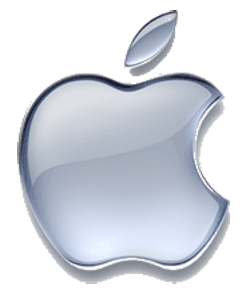1 min read
Samsung Loses Bid to Seal Sales Data in Apple Dispute
Samsung Electronics Co. (005930) lost a bid to keep sales data of some of its products sealed in a U.S. patent dispute with Apple Inc. Read ...

The name Scala is blended with scalable and language, signifying that it is designed to grow with the demands of its users.
Scala provides functional programming support and strong static type system, which makes it a great general purpose programming language.
To make Scala source code executable code which runs on Java virtual machine it is intended to be compiled to Java bytecode. It provides language interoperability with java so that libraries written in both languages can be referenced directly in Scala or Java code. Being object-oriented Scala uses curly brace syntax reminiscent of the c programming language. The various features offered by Scala which make it a great functional programming language include: lazy evolution, Standard ML, and Haskell, including currying, pattern matching, type inference, immutability, Scheme.
A small example of scala program:
"Good Morning" example
The Good Morning program written in scala has this form
Object GoodMorning extends App {
println("Good Morning")
}
There is no class declaration and nothing is declared to be static like in case of java; a singleton object created with the object is used instead. You can easily place static variables and methods in a singleton object with the same name as the class name, which is then known as a companion object. The underlying class for the singleton object has a $ appended.
The program is stored in the file named GoodMorning.scala, and then the user compiles it with the command:
$ Scala GoodMorning.scala
And runs with
$ Scala GoodMorning
Commands can be directly entered into the Scala interpreter, using –e option:
$ Scala ‘println("Good, Morning")'
In place of constructor parameters, Scala has class parameters, which are placed on the class similar to the parameter to a function. When it is declared with a Val or var modifier, fields are also defined with the same name and automatically initialized with the class parameters.
Default visibility in Scala is public.
Interested in technology trends? Check out library of tech resources and take your pick.

Scala has a good deal of flexibility as compared to java. Following are some examples.
Usage of Scala
Central drive behind Scala is to make life easier and productive for the programmer. This is done with three principal techniques: firstly It adds expressiveness, it tightly fuses object-oriented and functional programming concepts in one language, and then protects existing information by running on the Java virtual machine and interoperating seamlessly with java. Secondly, it cuts down on boilerplate, so that programmers can concentrate on the logic of their problems.
Scala offers a toolset to write scalable concurrent applications in a simple way with more confidence in their correctness. Scala is an excellent base of parallel, distributed, and concurrent computing, which is widely thought to be a very big challenge in software development but by the unique combination of features has won this challenge.
when it comes to parallelism, concurrency, and distributed computing every bit of mutable state is a potential liability and Scala's functional programming genes are an advantage to this. Scala design encourages users to search for more scalable functional alternatives but it does not prevent traditional imperative solutions.
The language is also a joy to be used outside these advance domains. It can perform any programming task, from large mission-critical systems to one line commands in the scala shell.
Using Scala apps are less costlier to maintain and easier to evolve Scala because Scala is a functional and object-oriented programming language that makes light bend reactive and helps developers write code that's more concise than other options. Java libraries are easy to use from Scala, and vice versa.
Scala is being called the next wave of computation engines because it relies more on the speed of data processing rather than the size of the batch, and the ability to process event streams in real time, hence it has taken the world of fast data.
An example related to that movement which is rapidly gaining mainstream momentum are Apache Flink, Apache Spark, Apache Kafka and Akka Stream.
There are some disadvantages which keep Scala from reaching the top. Those disadvantages are as follows:-
Above disadvantages are caused by the following factors.
We have studied about Scala its benefits and importance and if Scala makes for what it takes to run your project, you must definitely explore it and give it a try.
Need a tech solution for business? Get in touch.

1 min read
Samsung Electronics Co. (005930) lost a bid to keep sales data of some of its products sealed in a U.S. patent dispute with Apple Inc. Read ...

1 min read
After weeks of teasing, LG has finally given its 5.5-inch Optimus G Pro a full unveiling in South Korea today. The model for LG's home country...

1 min read
BTIG analyst Richard Greenfield is predicting that Apple will debut its long-rumored Pandora-like iRadio service to complement iTunes at some point...